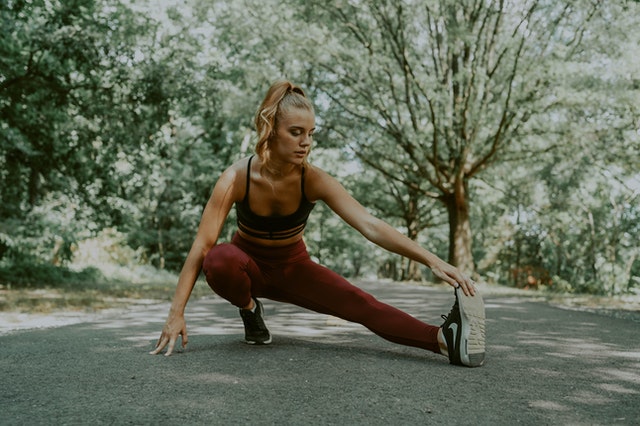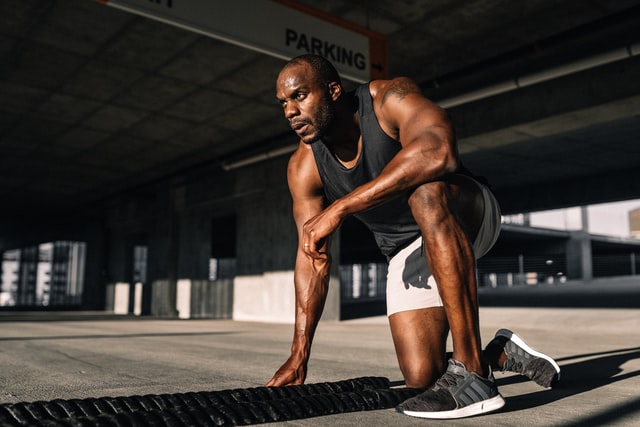Remember that muscle ache you feel the day after working out? That’s Delayed Onset Muscle Soreness or DOMS. Everybody experiences it and people tend to come up with their own explanations and remedies.
In this article, I’m going to share the scientific explanation for DOMS, as well as how you can avoid and even treat it. This knowledge will help you make the most of your exercise routines.
What is DOMS?
DOMS is the ache you feel the next day after going hard in the gym. It happens when you do exercise that you’re not used to.
If you don’t exercise regularly, you’ll likely get DOMS the first time you exercise. If you do work out consistently, you’re more likely to feel soreness after trying a new type of exercise.
For example, I lift weights about 3 times a week and I’ve been doing it for quite a while. But every time I increase my weights (eg, benching 80kg instead of the regular 70kg), I’ll feel soreness the next day.
You’ll get DOMS in the muscles you worked out. So for my bench press, the aches will be focused on my pectorals (chest muscles) and my triceps.
What causes DOMS?

DOMS is caused by microscopic tears in the muscle fibers and it’s due to the new intensity of exercise. These tears manifest as pain while your body deposits protein to repair the damage. DOMS usually takes between 24 and 72 hours to resolve depending on how intense your exercise.
What’s interesting is that when your body lays down protein to repair the muscles, it makes the muscles stronger. This ensures that you’re better prepared for the same intensity of exercise.
Can you get DOMS from doing cardio?
Yes, you can definitely get muscle soreness from doing cardio, whether it’s running on a treadmill or doing jumping jacks.
While running, your leg muscles – chiefly your quadriceps – are constantly contracting to move you forward. The faster you run, the faster the muscle contracts, and the more soreness you’ll likely feel the next day.
With jumping jacks, you’re using your calf muscles to jump up and down, so the soreness will be focused in that area.
4 strategies to prevent DOMS
Even though DOMS is the body’s natural response to a new kind of exercise, there are ways to tackle it. These 4 strategies will help you avoid or at least minimize the soreness you feel after exercise.
1. Warm-up before each exercise
Warm-up exercises have been shown to reduce muscle soreness by a significant amount. Actions like stretching and light jogging increase blood flow to the muscles and preps them for exercise. This makes them more flexible and less likely to experience those micro-tears I talked about earlier.
Here’s a great video on some warm up exercises.
2. Take it easy
DOMS is one of the reasons why professional trainers only give you simple exercises during your first few weeks in the gym.
If you take it easy and give your body time to adjust to the exercise, the muscle soreness will be less severe, and you can quickly get back to exercising.
Taking it easy is also important for motivation. You’re more likely to exercise when you actually feel up to it and your body doesn’t ache.
3. Do muscle splits
Muscle splits is a practice where you focus on a different group of muscles every time you hit the gym. These allow you to go the distance without affecting your next workout.
As an example, I train legs and core on one day, and chest and triceps on the other. That way, I can switch between muscle groups when one feels sore. Barbend has a fantastic article on muscle splits.
4. Keep exercising
One of the worst things you can do is quit after you experience muscle soreness. There’s something called the reversibility principle, which basically means that you lose whatever body adaptations you don’t use.
For example, if you stop running, your cardiopulmonary endurance will slowly diminish over time and eventually, you’ll be no different from someone who doesn’t run at all.
With muscle soreness, stoping exercise will trigger muscle adaptations. Your body will assume you no longer need stronger muscles and it will reallocate the extra protein.
That then leads to a vicious cycle where you get sore after jumping back into the gym.
3 strategies to deal with DOMS
1. Hydrate

Hydrating can help you recover from muscle soreness by increasing nutrient transport to the affected muscles and regulating pH levels. Staying hydrated before, during, and after your exercise can also keep your cartilages soft and pliable, and prevent injury.
2. Massage the area
Massaging sore muscles with topical analgesics can also help you deal with DOMS. Topical analgesics contain nonsteroidal anti-inflammatory drugs (NSAIDs) that are designed to tackle pain.
Massaging the muscles can also increase blood flow and the supply of endorphins to the area.
3. Take cold baths
A 2016 review of studies found that taking ice baths can help deal with muscle soreness. The optimal duration is between 10 and 15 minutes, and water is between 11 and 15 °C.
These strategies can help you deal with muscle soreness after exercise quite effectively. But note that there’s no way to make muscle soreness go away faster.
Your muscles have experienced micro-injuries and the soreness is a physical representation of that. As they heal, the pain will go away.
How can you prevent DOMS?
You can prevent DOMS by
- Warming up for up to 15 minutes before each exercise
- Taking it easy the first time you begin an exercise routine
- Maintaining your exercise routine to prevent the reversibility principle
Should you push through the pain of muscle soreness?

No, you should not push through the pain of muscle soreness.
During DOMS, your body is healing the damaged muscles so they can become stronger and more adapted to the exercise. The best approach is to let your body do its thing, and you can resume exercise after the pain stops.

